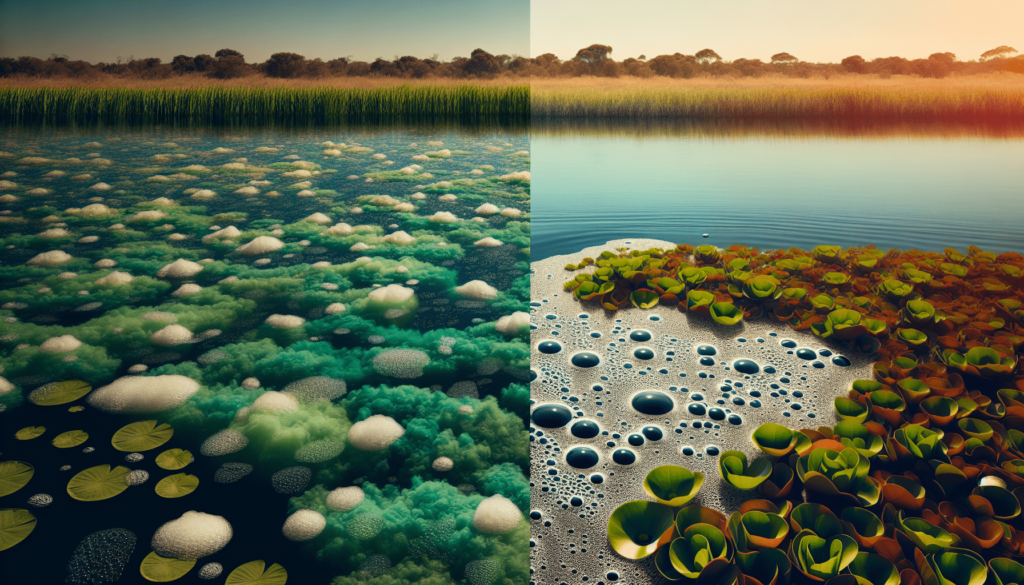Have you ever wondered about the different methods available for treating wastewater? Among the myriad options, stabilization ponds and lagoons stand out as two significant methods with distinct processes and benefits. Understanding the intricacies of these systems is vital for environmental science, urban planning, and ensuring sustainable practices in wastewater management.
Understanding Wastewater Treatment
Before diving into the specifics of stabilization ponds and lagoons, it’s crucial to grasp the basics of wastewater treatment. Wastewater treatment involves processes designed to remove contaminants from sewage or industrial wastewater so that it can be safely released back into the environment or reused. The central aim is to reduce the pollutants to ensure the treated water meets certain safety standards. This treatment generally includes physical, chemical, and biological processes.
What are Stabilization Ponds?
Definition and Basic Concept
Stabilization ponds, also known as waste stabilization ponds (WSPs), are large, shallow basins designed to treat wastewater through natural biological processes. These systems leverage the natural decay of pollutants by using sunlight, algae, bacteria, and other organisms. It’s a method that has been used for decades, favored for its simplicity and efficiency.
How Stabilization Ponds Work
The function of stabilization ponds hinges on the interaction between algae and bacteria. Algae provide the oxygen necessary for aerobic bacteria to thrive, breaking down organic matter in the water. In return, bacteria release carbon dioxide, which algae use for photosynthesis. This symbiotic relationship creates a natural cycle that purifies the water over time.
Here is a basic process breakdown:
- Inflow: Wastewater enters the pond.
- Settlement: Particulate matter begins to settle at the pond’s base.
- Biological Treatment: Algae and bacteria start the purification process.
- Effluent Discharge: Treated water exits the pond.
Types of Stabilization Ponds
Stabilization ponds are typically classified into three categories:
- Facultative Ponds: Operate under both aerobic and anaerobic conditions, meaning they can function with or without oxygen.
- Maturation Ponds: Generally the final ponds in the treatment process, used to remove pathogens and further polish the effluent.
- Anaerobic Ponds: Used primarily for treating high-strength wastewater, these ponds do not rely on oxygen-using processes.
What are Lagoons?

Definition and Basic Concept
Lagoons in wastewater treatment are also large, earthen basins that treat sewage using similar natural processes. However, the design and operation of lagoons might differ slightly in terms of depth and treatment stages. Lagoons are broader in scope and can incorporate mechanical aeration to enhance treatment.
How Lagoons Work
While lagoons share similarities with stabilization ponds in terms of basic functions, they might include mechanical components to boost aeration and facilitate the treatment process more robustly. Here’s how a typical lagoon system functions:
- Inflow: Like ponds, wastewater enters the lagoon.
- Settling: Initial sedimentation of heavier particles occurs.
- Bacterial Breakdown: Aerobic and anaerobic processes break down organic matter.
- Mechanical Aeration (Optional): Often included to increase oxygen levels and enhance bacterial activity.
- Effluent Discharge: The treated water is released from the system.
Types of Lagoons
Wastewater lagoons typically include:
- Aerated Lagoons: Equipped with aerators to increase oxygen concentration, speeding up the biological treatment process.
- Settling Lagoons: Primarily focused on sedimentation, separating solids and particulate matter.
- Maturation Lagoons: Provide additional time for effluent polishing and pathogen attenuation.

Comparing Stabilization Ponds and Lagoons
To make an informed decision about using stabilization ponds versus lagoons, several factors need consideration:
Treatment Efficiency
- Stabilization Ponds: Rely on natural biological processes and are typically effective for low to medium-strength wastewaters. They are influenced heavily by climate and weather conditions.
- Lagoons: With potential mechanical support, lagoons can handle a wider range of wastewater strengths and are generally more reliable across different conditions due to artificial oxygenation.
Space and Infrastructure Needs
- Stabilization Ponds: Require a significant amount of land, making them suitable in rural or open-area settings. They offer a low infrastructure solution but demand substantial space.
- Lagoons: Also require large areas but can be adaptable to smaller spaces with deeper designs and aeration systems, offering more versatility.
Cost Considerations
- Stabilization Ponds: Usually lower in cost due to minimal infrastructure and energy demands. The major expenses involve land acquisition and occasional maintenance.
- Lagoons: Higher initial and operational costs, especially with mechanical components, but can provide more uniform treatment results.
Environmental Impact
- Stabilization Ponds: Generally have a lower carbon footprint due to natural processes, though they can be affected by wildlife and climatic variables.
- Lagoons: Can offer greater environmental control with mechanical aeration but may have a higher energy usage depending on the design.
| Factor | Stabilization Ponds | Lagoons |
|---|---|---|
| Treatment Efficiency | Low to moderate | Moderate to high |
| Space Requirements | Large | Moderate |
| Cost | Low | Higher |
| Environmental Impact | Low carbon footprint | Higher energy usage |
| Maintenance | Minimal | Could be higher with mechanical systems |
Considerations for Choosing Between the Two
Site Location and Size
The geographical setting and available space heavily influence the choice. Rural settings with ample land might favor stabilization ponds due to simplicity, while urban areas with limited space might require more compact lagoon systems with mechanical augmentation.
Regulatory Requirements
Local environmental regulations can dictate which system is more feasible or legally compliant. Understanding these guidelines will aid in making the most suitable choice for wastewater treatment needs.
Community and Environmental Context
The surrounding community’s needs and environmental concerns will impact the decision. Systems with less odor or less visual impact might be required in residential areas, influencing whether a pond or a lagoon is better suited for the project.
Conclusion
Deciding between stabilization ponds and lagoons for wastewater treatment involves weighing several factors, including efficiency, cost, environmental impact, and feasibility given the site-specific circumstances. Both methods have their merits, providing natural solutions to wastewater challenges.
Armed with a deeper understanding, you can now evaluate which system might best serve your needs or the needs of your community. Knowledge of these systems not only helps in making practical decisions but also contributes to more sustainable and environmentally friendly wastewater management practices.
